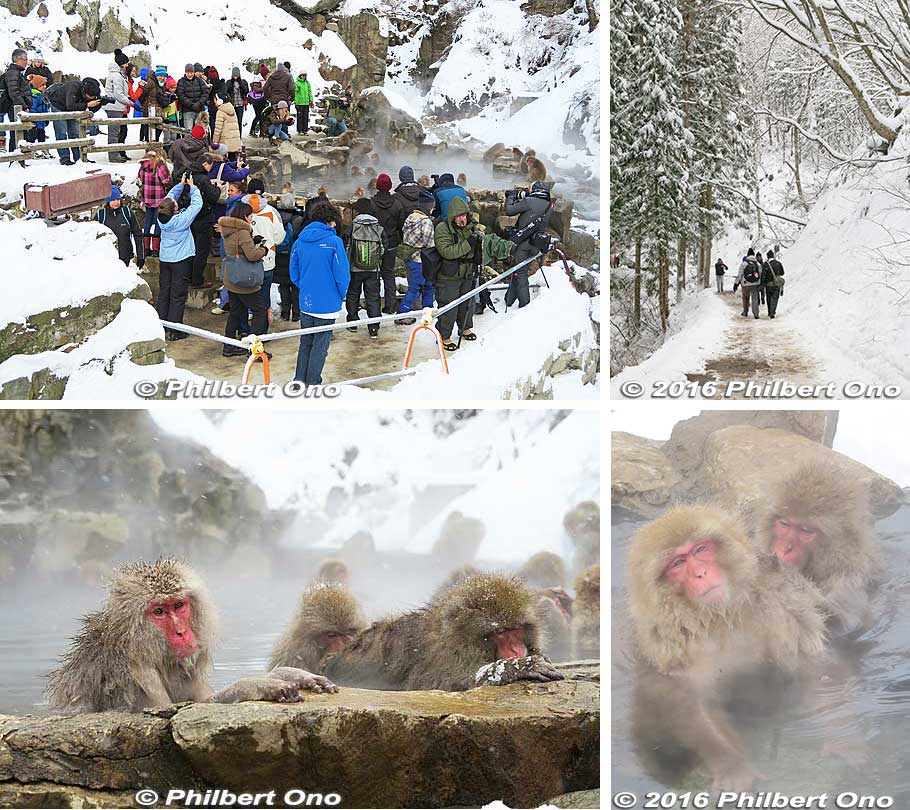
Among wildlife photographers outside Japan, the two most sought-after wildlife subjects in Japan are the tancho red-crowned cranes (in Hokkaido) and the so-called “snow monkeys” in Nagano. Those of us in Japan can understand the popularity of cranes for being auspicious and beautiful, but monkeys?? Except at certain Shinto shrines where monkeys supposed to be the divine servants of the gods, wild monkeys are largely regarded as pests out to steal your food, even from your own hand if you’re not careful.
Unless you’re a primatologist, monkeys don’t normally have a positive connotation in Japan. Calling someone (usually male) a “monkey” (saru) in reference to a monkey-like face is pretty common. (Warlord Toyotomi Hideyoshi is a famous example, thanks to his teasing boss Oda Nobunaga.)
To be fair, there are a few examples of monkeys being cute or comical. The saru gundan monkeys are trained for street entertainment. There’s also the cute Monchhichi (モンチッチ) plush toys famous since 1974. (See https://www.monchhichi.co.jp/ )
In winter 2016, I finally decided to see the famous snow monkeys in Nagano to see what the fuss was about. In the Year of the Monkey, it was. With a few friends and an excellent guide, I traveled deep into the snowy mountains to see the snow monkeys (macaque or “Nihon-zaru” in Japanese). They live in a small, snowy hot spring valley called “Jigokudani.” The snow monkeys are in a nature park called “Jigokudani Wild Monkey Park” (Jigokudani Yaen Koen).
The park was established in 1964 just for the monkeys. The park operator feeds the monkeys and maintains a small hot spring bath for them. Amid the snow, the monkeys bathe in this bath while remaining oblivious to all the foreign tourists gawking at them and taking pictures (upper left photo). The monkeys do look relaxed (like humans) in the hot spring bath (lower photos).
Humans are not allowed to bathe with the monkeys. For one thing, the bath may contain poop, etc., so it’s not sanitary. I was more amazed by all the foreign tourists amazed by these wild monkeys. I was gawking at the foreigners gawking at the monkeys. I could somehow understand why it’s not a big deal among the Japanese. I don’t think I saw any Japanese tourists.
Although winter (Jan. and Feb.) with snow is the most popular time to see the monkeys, the park is open year-round (9 am–4 pm). The hot spring bath seems to attract more monkeys in winter. The park’s live cam (link below) doesn’t show too many monkeys in the bath during the warmer months.
To get to Jigokudani Wild Monkey Park, it’s a 30-min. hike (1.6 km) through the snowy woods (upper right photo). The hiking trail starts from Shibu Onsen hot spring. It’s flat terrain, but can be freezing cold in winter, so wear a thick jacket and cap/hood, a face mask, and bring hand warmers. The snow monkey park does have a heated room where you can rest and warm up. There’s a small park admission fee.
After visiting the monkeys, I recommend lodging in Shibu Onsen or Yudanaka Onsen nearby. Great to soak in hot spring baths for humans only. ![]()
![]() Closest train station is Yudanaka Station on the Nagano Dentetsu Line, little over an one hour from Nagano Station. From Yudanaka Station, it’s about 15 min. by car/taxi to the entrance of the hiking trail to the monkey park.
Closest train station is Yudanaka Station on the Nagano Dentetsu Line, little over an one hour from Nagano Station. From Yudanaka Station, it’s about 15 min. by car/taxi to the entrance of the hiking trail to the monkey park.
Jigokudani Wild Monkey Park: https://en.jigokudani-yaenkoen.co.jp/
More snow monkey photos: https://photoguide.jp/pix/thumbnails.php?album=43
Shibu Onsen: https://www.shibuonsen.net/english/